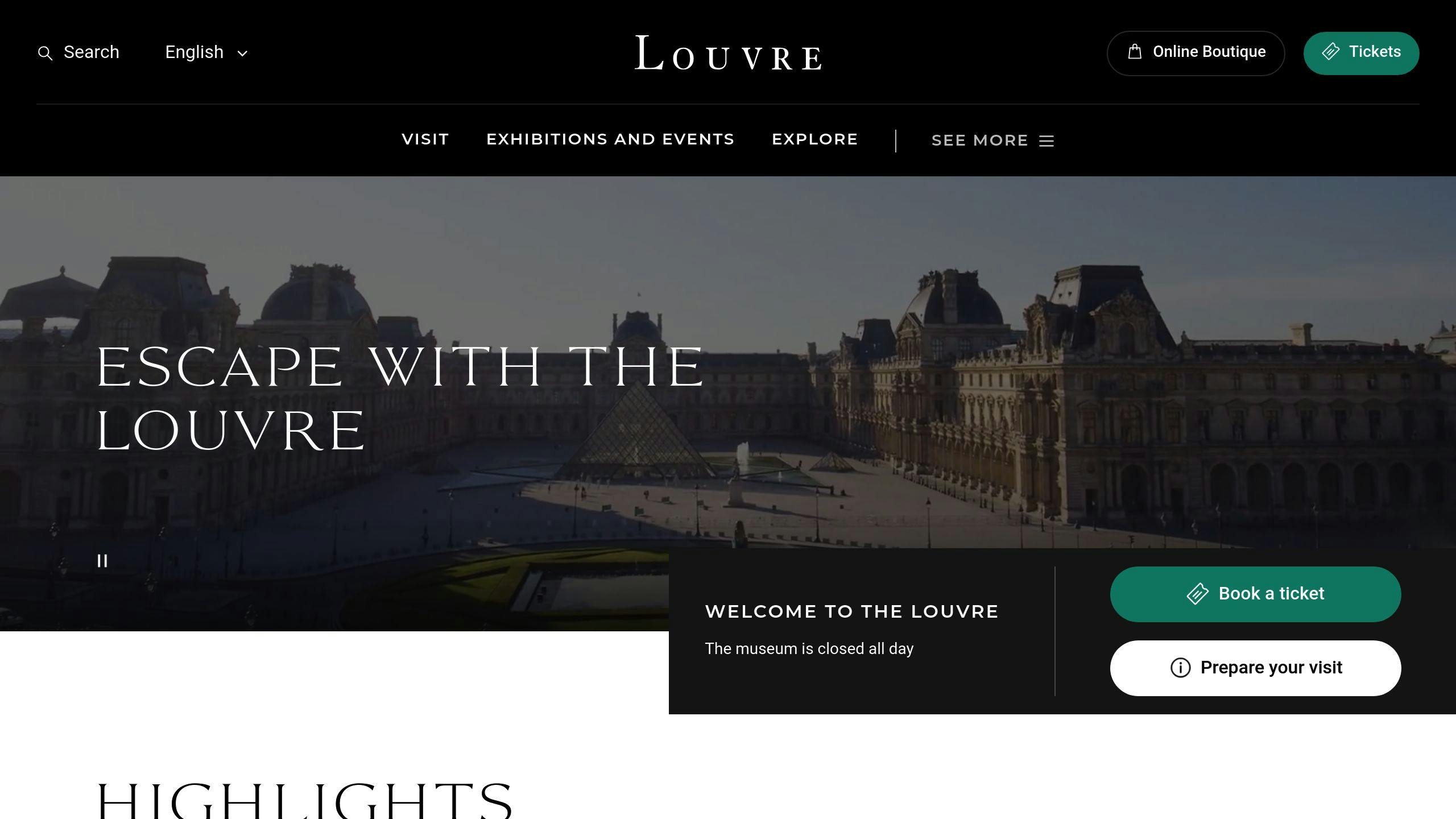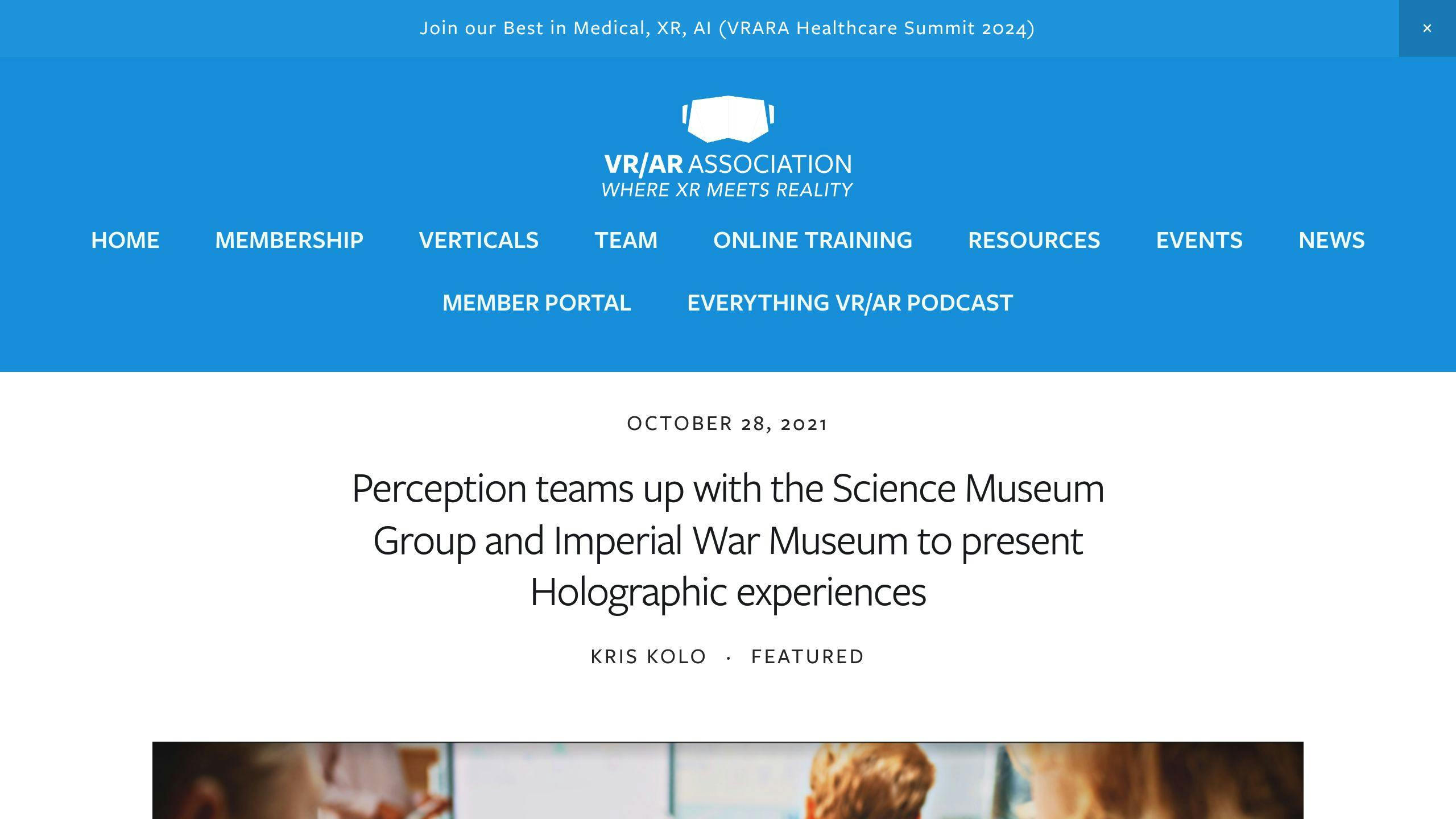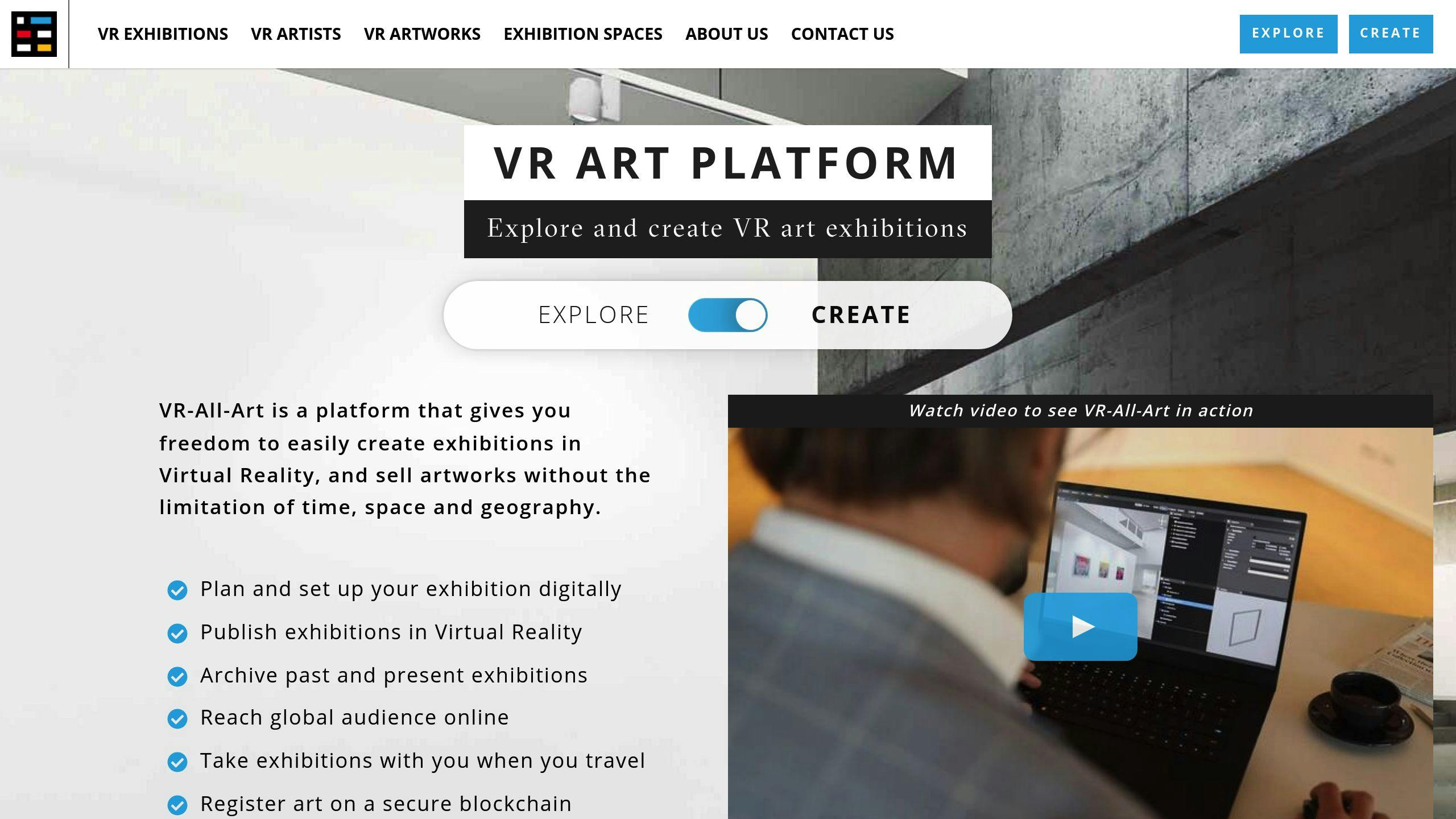Virtual Reality (VR) is reshaping museums by enabling digital preservation, immersive storytelling, and global accessibility. Here's how VR is changing museum partnerships:
- Why Partner for VR: Museums collaborate with tech companies to overcome costs, technical challenges, and create shared VR experiences.
- Partnership Models:
- Museum-Tech: Combining cultural expertise with tech innovation.
- Academic: Partnering with universities for research-based VR content.
- Inter-Museum: Pooling resources for shared digital storytelling.
- Benefits: VR allows museums to preserve artifacts digitally, engage audiences with interactive learning, and expand access to global audiences.
- Challenges: High costs, accessibility issues, and fragmentation in VR efforts require thoughtful planning and collaboration.
Quick Example:
The Louvre partnered with HTC Vive Arts for "Mona Lisa: Beyond the Glass", offering a VR experience that protected the painting while engaging global audiences.
VR is helping museums break physical barriers and connect with audiences worldwide, but partnerships are key to overcoming financial and technical hurdles.
Mona Lisa: Beyond the Glass at The Louvre

Elements for Successful VR Partnerships
Building effective VR partnerships takes thoughtful planning. Certain key elements ensure collaborations can create engaging experiences for museum audiences.
Types of VR Partnership Models
Museums often rely on three main partnership models to integrate VR technology effectively:
- Museum-tech collaborations: These partnerships combine cultural knowledge with technical expertise to develop immersive experiences [2][3].
- Academic partnerships: Universities and research institutions contribute cutting-edge research and methodologies, enriching VR content with scholarly insights.
- Inter-museum VR initiatives: By pooling resources, museums can create shared digital experiences that promote cross-institutional storytelling [2].
VR Equipment and Content Needs
For VR to work effectively in museums, certain tools and content development capabilities are essential:
| Component | Requirements | Purpose |
|---|---|---|
| Hardware | High-quality VR headsets | Provide immersive and realistic experiences |
| Content Creation | High-resolution 3D scanning | Produce accurate digital replicas of artifacts |
| Platform Development | Intuitive user interface design | Make experiences easy to navigate |
| Technical Support | Regular system maintenance | Keep the technology reliable and functional |
Educational Value of VR in Museums
VR offers museums a way to enhance education through interactive and engaging experiences. With VR, museums can:
- Take visitors to historical sites without leaving the building.
- Showcase intricate artifact details that might be missed otherwise.
- Create interactive storytelling environments.
- Allow hands-on exploration of delicate objects that can’t be physically handled.
"The user can move freely through a space and understand what it feels like through an interactive experience. For our clients, this means greater transparency and decision-making abilities in the design process", says David Fersh, Architect and Design Technology Leader at SmithGroup. His insight highlights how VR can bring historical and cultural settings to life [5].
These applications make cultural heritage more engaging and accessible to a wide range of audiences [1]. However, while these elements are key to building successful VR partnerships, museums must also address significant challenges to fully unlock VR's potential.
Challenges in Adopting VR
Museums exploring VR technology face several hurdles that can complicate its integration. Tackling these issues is key to making the most of VR's potential.
Financial Challenges of VR Projects
The high cost of implementing VR is a major concern for museums. Expenses include:
| Cost Category | Components | Impact on Museums |
|---|---|---|
| Hardware Investment | VR headsets, tracking systems | Significant upfront costs |
| Content Development | 3D scanning, programming | Ongoing production expenses |
| Maintenance | System updates, repairs | Regular operational costs |
| Staff Training | Developing technical skills | Increased staffing expenses |
A good example is the partnership between The Louvre and HTC Vive Arts, which demonstrates how collaborations can help museums share costs and access advanced VR tools [2].
Ensuring VR Accessibility
Creating VR experiences that everyone can enjoy is a challenge. Museums can address this by:
- Using VR systems that work with assistive technologies.
- Offering alternative experiences for those unable to use VR.
- Training staff to guide visitors with varying levels of tech familiarity [1].
Avoiding Fragmentation in VR Efforts
When VR projects operate in isolation, they can become inefficient and disconnected from broader museum goals. As Zillah Watson points out, collaboration between museums is crucial to avoid this problem [2].
To stay cohesive, museums should:
- Join initiatives to standardize VR practices across the industry.
- Share resources and insights with other institutions.
- Develop VR platforms that allow for shared experiences across multiple museums [2].
Examples of Successful VR Museum Partnerships
Collaborations between museums and VR technology providers show how teamwork can overcome obstacles and create new ways to experience art and history.
The Louvre and HTC Vive Arts Collaboration
In 2019, The Louvre teamed up with HTC Vive Arts for "Mona Lisa: Beyond the Glass", a VR experience that brought the famous painting to life like never before. Visitors could dive into an interactive story, seeing the artwork in incredible detail. This approach not only engaged visitors but also helped protect the painting by reducing physical exposure. Plus, it introduced a fresh revenue source for the museum [1][2].
Perception and Science Museum Group Partnership

The Science Museum Group worked with Perception to blend VR and holograms into interactive exhibits. One standout example let visitors explore holographic molecular models while using VR to simulate their behaviors in various settings. Key outcomes of this partnership included:
- Development of immersive simulations for scientific concepts
- Combining VR with holographic technology for richer displays
- Hands-on educational tools that simplified complex ideas
Discover Art Around the World

Discover Art Around the World promotes VR museum projects globally, encouraging collaboration and knowledge-sharing among institutions. This platform offers museums and visitors a chance to explore how others are using VR to elevate cultural experiences, sparking ideas for future partnerships.
These examples show how VR can reshape museum experiences, opening doors to even more possibilities down the line.
Future of VR in Museums
Opportunities for Inter-Museum VR Projects
Working together on VR projects allows museums to pool resources and make a bigger impact. By sharing technology and splitting development costs, they can create advanced virtual experiences that benefit the entire museum community. A great example is the Smithsonian teaming up with HTC Vive Arts and Intel to build immersive historical environments [6].
This teamwork also helps smaller museums, giving them access to the technology and expertise of larger institutions. In return, these smaller museums contribute their unique collections and knowledge. Such collaboration avoids scattered efforts and ensures a consistent quality across VR experiences [2].
Forming Partnerships with VR Tech Companies
Teaming up with tech companies is key for museums to push VR innovation forward. The challenge is balancing cutting-edge technology with meaningful educational content.
"Virtual reality provides a unique and transformative way to experience a museum, benefiting not only the visitor, but the museum as well", says David Fersh, Architect and Design Technology Leader at SmithGroup [5].
Universities have also become important allies in advancing museum VR projects. Schools like UCL and the University of Barcelona bring expertise in cultural heritage applications [2], helping museums design virtual experiences that are both engaging and educational. These collaborations not only improve VR tools but also help museums connect with broader audiences worldwide.
Reaching Global Audiences with VR
VR makes it possible for people to explore historical sites and ancient cultures from anywhere [4]. Digital replicas of fragile artifacts now offer access to items that were once out of reach [1]. Museums are also adding features like audio descriptions, assistive tools, and multilingual options to make VR accessible to everyone, including remote communities, schools, researchers, and cultural exchange programs.
As museums adopt VR, the focus is shifting from one-off projects to joint efforts that leave a lasting mark on the cultural world. These initiatives underline the value of partnerships in helping museums reach more people and rethink how they engage with global audiences in the digital era.
Conclusion: VR's Role in Museums
Virtual Reality (VR) is changing how museums share and preserve culture, breaking physical barriers and offering immersive learning experiences. This technology is reshaping how institutions collaborate and present their collections to audiences worldwide.
With VR, museums can design exhibitions without physical limits, offering detailed 3D models that protect original artifacts while making them accessible to more people. This approach redefines how cultural heritage is shared and experienced, blending preservation with accessibility.
Moving forward, partnerships with tech companies will play a key role in addressing financial and technical challenges. By pooling resources and knowledge, museums can continue to deliver engaging educational content. Platforms like Discover Art Around the World help connect museums and promote their VR projects on a global scale.

